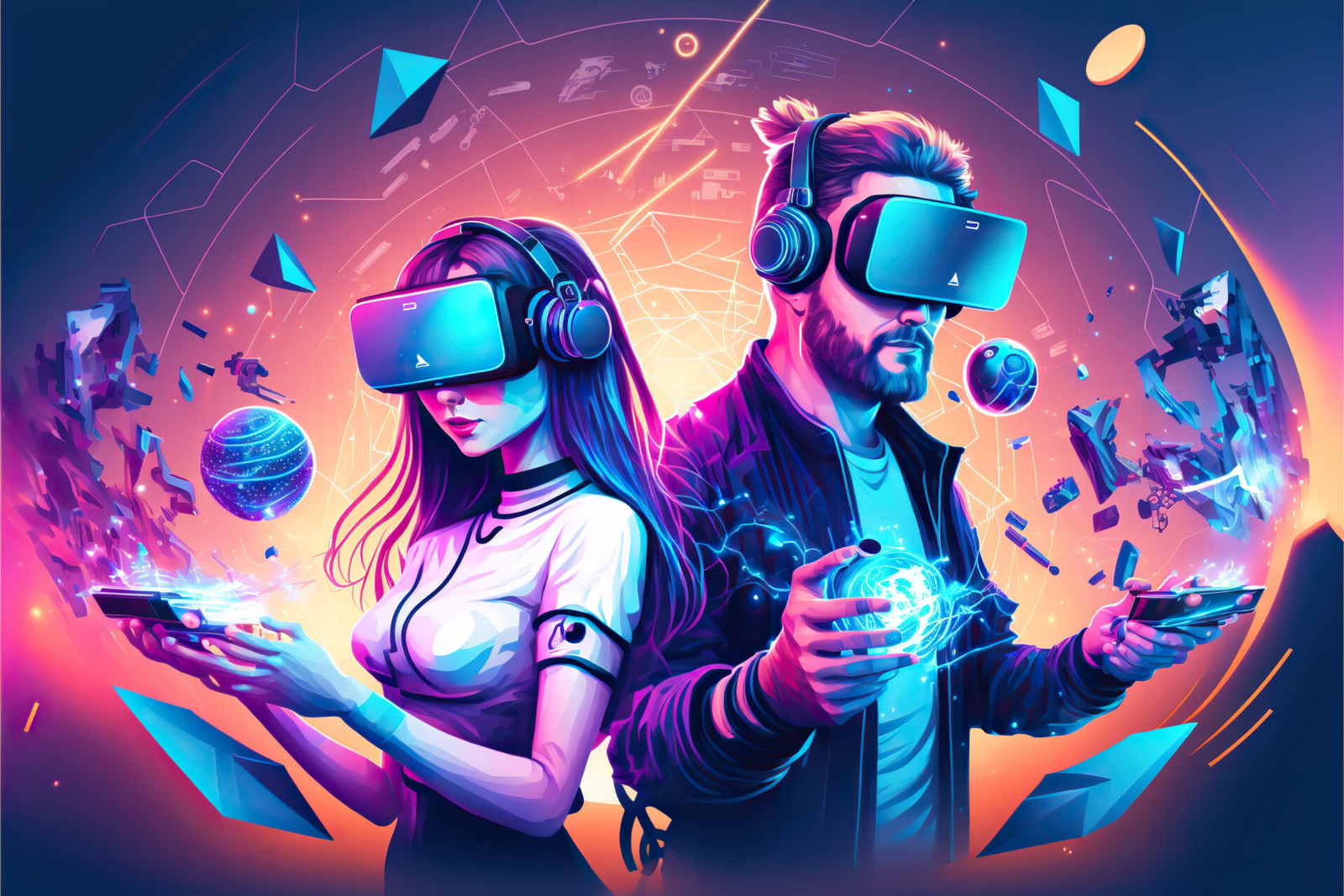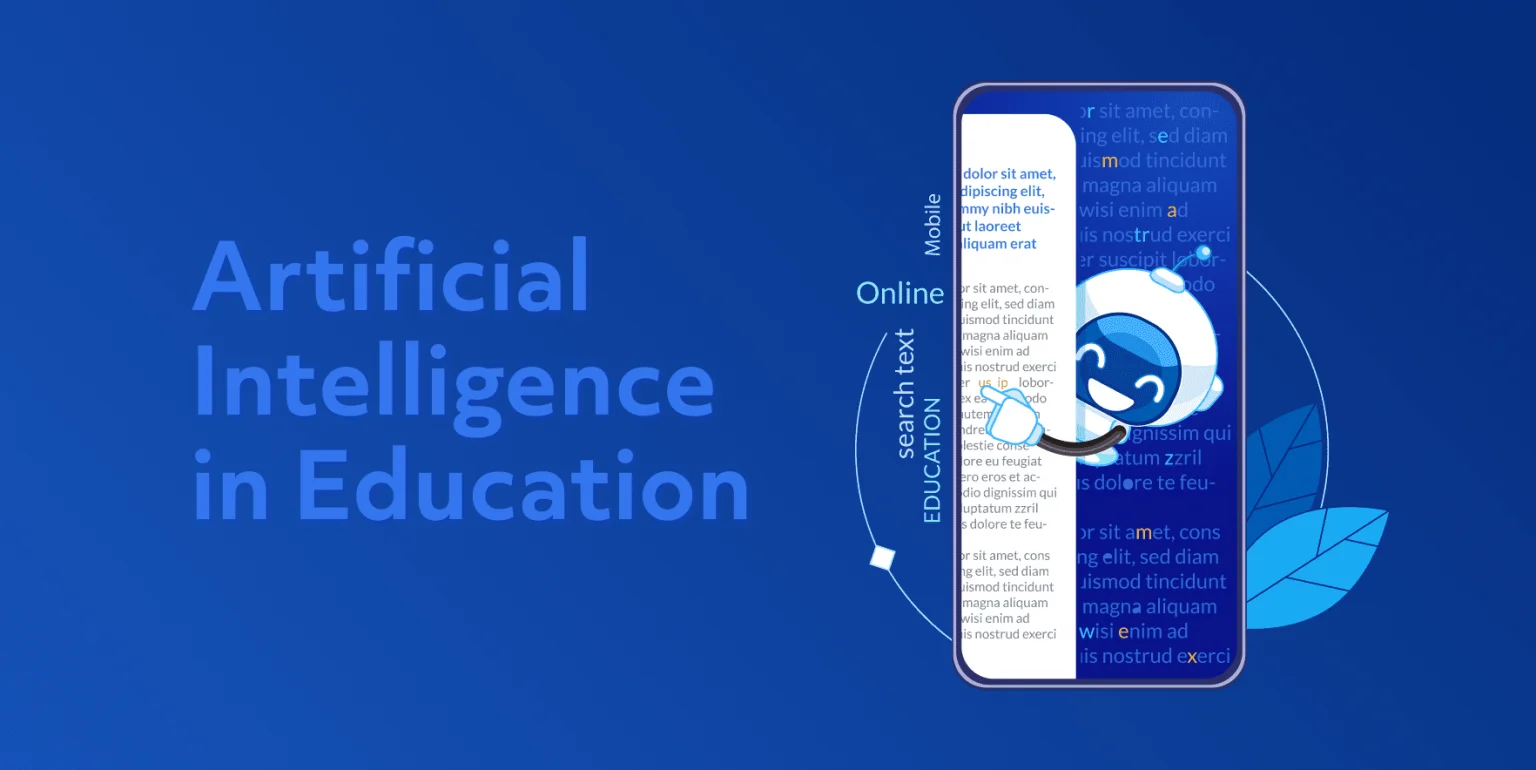Over the past few years, the term “Metaverse” has become quite a buzzword. Despite the fact that the concept is not really new, companies like Microsoft, Epic Games, and Facebook only recently started talking about the development of their own metaverses. Each tech giant has its own ideas about the future of the Metaverse and these ideas are already changing the way they do business. So what is metaverse: just a temporary hype or our nearest future?
What does “metaverse” mean?
Today the term “metaverse” has many interpretations, with representatives from different companies giving their own definitions. Here is a more or less general one: a metaverse is a single three-dimensional virtual space that is based on virtual and augmented reality and blockchain technologies. This virtual space allows to set up various activities (i.e. communication, work, business) with minimal costs and minimal time spent. Examples of the metaverse are video games like Sandbox, Illuvium, Fortnite and virtual social worlds like Second Life.
The IT landscape is also starting to change with the rise of the Metaverse. Many businesses, including software developing company SoftTeco, are exploring how their expertise in building cutting-edge solutions can support the infrastructure needed for this new virtual frontier. As more companies pivot toward Metaverse development, partnering with innovative software development companies will be essential for long-term success.
The term “metaverse” was first described by Neal Stephenson in his book Snow Crash (1992). Stephenson defined the meta-universe as a “cyberspace that allows you to live and not return to the real world.” Since then, different versions of the meta-universe appeared in the movies Ready Player One and The Matrix.
The term “metaverse” was first described by Neal Stephenson in his book “Snow Crash” (1992). Stephenson defined meta-universe as a “cyberspace that allows you to live and not return to the real world.” Since then, different versions of the meta-universe appeared in the movies “First Man Standby” and “The Matrix” (and we are still here).
The first real-life example of a metaverse was the Second Life virtual reality project launched in 2003. While it lost in popularity with the rise of mobile, it was quite a successful attempt of creating a fully-functioning metaverse with user avatars being able to live, work, and socialize – all in virtual reality. And now, as companies started paying extra attention to such technologies as Oculus Rift or Google Glasses, we might see projects like Second Life getting a second chance. In fact, the creators of Second Life recently stated that the game will make a comeback soon “to show everyone who came first” – and honestly, it sounds quite promising.
The value of blockchain and NFT in the metaverse
While Second Life was intended to bring a new level of entertainment to the masses, the metaverse is not only about entertainment. It often has its own internal economy that allows users to withdraw their virtual earnings in real life. This brings us to the topic of blockchain, NFT, and cryptocurrency.
An NFT is an important term if you are going to understand the metaverse and its internal processes. NFT stands for a non-fungible token – a unique digital item that cannot be replaced with something else. An example of an NFT would be a game collectible or a digital art piece.
An important thing to note here is that NFTs are sold to owners via a smart contract approach. The certificate of ownership is generated via cryptocurrency so one NFT item can have only one owner. Of course, the owner can sell it but let’s repeat once again: an NFT item can be in the possession of one person only. Another important thing to remember about NFTs: they are stored on a blockchain like Ethereum and a record of an NFT ownership is enshrined in the blockchain.
Wait, but what do NFTs have to do with metaverse? In fact, quite a lot. Players can do so many things with NFTs and so many objects can be considered NFTs. In Decentraland, for example, an NFT is a mana native project token used for investing and paying for services while in Sandbox it is a sand token that allows you to create and transform anything you want. In short, NFTs are the main trading items in the metaverse and they offer their owners unique perks (in addition to the sense of owning a unique and original item).
Monetization in the metaverse
Okay, so metaverse is not only about living your best life as an avatar but also about monetization of some sort. How exactly does it work?
The main ways to make money in a metaverse are:
- Playing various games and betting (Play-to-Earn);
- Investment in tokens;
- Exchange of in-game currency through cryptocurrency exchanges;
- Selling in-game NFT items at auctions;
- Renting in-game assets;
- Conducting promotions in the real world;
- Giving credits to new players.
As you can see, there are multiple ways to earn in a metaverse – you just have to choose the one that works the best for you.
Does Metaverse really matter?
The global spending on the underlying meta-universe technology is expected to increase from $12 billion to $72.8 billion by 2026 and Gartner named metaverse as one of the biggest trends for 2024. Given the rise of remote work and the shift to digital due to the pandemic, people have become more reliant on virtual space. In the light of this, business leaders across industries started to pay more attention to the concept of the metaverse, which seems to be the next logical step in the development of the Internet.
To determine how useful the metaverse can be and what possibilities it provides for businesses, let’s consider some of its most notable benefits:
- More immersive gaming: with an option to own in-game assets and the right to distribute them, the idea of exploring the virtual space becomes even more attractive to players.
- Next-level marketing: businesses can offer customers a more immersive experience by letting them try products and services in virtual reality.
- Next-level entertainment: with metaverse, businesses and brands can conduct events (i.e. concerts or fashion shows) in virtual reality and thus increase user engagement.
Without a doubt, the interaction of the virtual and physical world will revolutionize a number of industries – let’s look at several examples.
Gaming

According to Statista, the global video game market was $178 billion in 2021 and is expected to reach approximately $268 billion by 2025. Around the world, gaming remains one of the most popular ways to spend time and it makes a significant contribution to the growth of the metaverse and its popularity.
Metaverse takes gaming to a whole new level by allowing you to not only play but also earn money and GameFi is a perfect example. Being a combination of gaming and finance, GameFi is an emerging new industry that is based on rewarding players for gaming. GameFi combines video games, blockchain technology and decentralized finance (DeFi) and is named a highly promising industry to keep an eye on. And if you need an example of metaverse gaming, remember that we talked about Decentraland: a virtual reality platform where you can buy, sell and develop virtual land with mana tokens (virtual land plots are sold as NFTs).
Marketing and e-commerce
The Metaverse is already influencing digital media and e-commerce and with the gradual merge of the real and virtual worlds, marketers need to be at the forefront of its development. Big brands already create marketing activities where immersive experiences play a key role and these activities relate to or parallel with what the brand does in real life.
In 2021, the Gucci brand collaborated with Roblox and recreated a digital version of the Gucci Garden where 20,000 users were able to try on and buy virtual clothes and accessories. During the event, a virtual Queen Bee Dionysus bag sold for $4115 while in real life it costs $3400 (the virtual bag can be used on the Roblox platform only). Nike also got on the virtual merchandise train and opened Nikeland: a virtual living room where visitors can dress up their characters in Nike clothing and shoes.
As for the entertainment, some artists started hosting online events not only on streaming services or online broadcasts but also on various platforms in the metaverse. An example is a Lil Nas X concert in Roblox (sounds crazy, right?). As the meta-universe evolves, brands need to rethink their products, services and advertising methods in order for them to adapt to the new virtual and profitable reality.
Education

The educational potential of the metaverse looks highly promising as the new virtual reality can greatly transform the learning process and create a truly effective learning environment. Just imagine an anatomy lesson taking place not in a classroom, but in an operating room with the latest technology – and that’s just one example. A virtual learning environment can also eliminate language barriers and it can allow people from different countries to learn in a single virtual space without social or language difficulties.
A real-life example is Microsoft Mesh which is a mixed reality platform where students, faculty, and staff can interact by using their 3D avatars. Users can use Microsoft HoloLens to interact in an immersive classroom or see the avatars in a traditional video conference. Hence, it’s quite obvious that the question of how to use the metaverse in education has dozens of good answers.
The future of software in the Metaverse
A few years ago there was a revolution in programming when the first iPhone premiered and developers and software companies began shifting their focus to mobile development. Does this mean that the programming landscape is about to undergo a similar revolution because of the metaverse?
Just as companies today are heavily relying on mobile app development to reach their desired audience, AR/VR development will soon become a must to deliver the expected digital experiences. This means there will be an increased demand for developers with expertise in designing AR/VR software, i.e. 3D modeling or blockchain development.
Given the growing scale of metaverse, companies are already looking for developers with relevant expertise to implement their products and services in the fast-growing virtual reality. So whether metaverse is a long-term prospect or a notorious temporary trend and whether it will affect your software – we will find out quite soon.



